Why can't you view Google Meet History?
Have you ever finished up an important Google Meet call or online class, only to want to reference something that was discussed? Maybe you need the exact date of a meeting or want to revisit notes a colleague shared. Unfortunately, you quickly realize that Google Meet doesn't have a built-in way to view your meeting history.
Sure, if you visit Google's support documentation, you'll find information about a "call log," but this is primarily geared towards those who use Google Meet's telephone features. It won't help you recover details of standard video conferences.
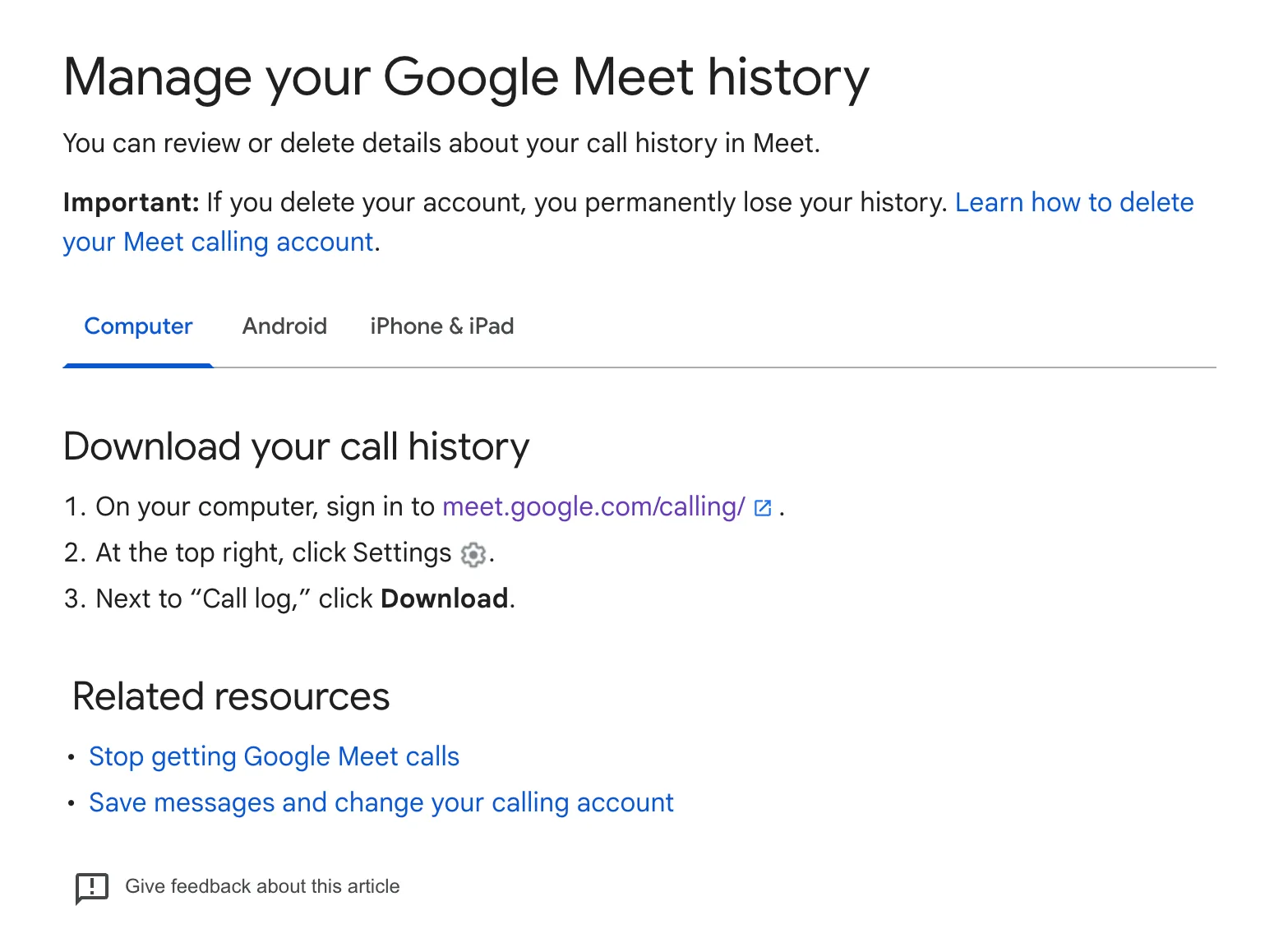
How to see my Google Meet History
You have 3 options:
- Check your Google Calendar history
- Use the Admin Logs
- Using a Google Meeting recorder management tool
Lets dig into these options:
1. Checking your Calendar for a log of Google Meet History
While calendar invites provide a basic record of meeting schedules, they fall short in providing detailed information about past meetings. Here are some limitations of relying solely on calendar invites:
- Lack of Meeting Transcripts: Calendar invites do not provide any audio or text transcripts of the meeting discussions, making it difficult to capture important details and action items.
- Limited Attendance Tracking: Calendar invites typically only indicate the scheduled attendees, not those who actually participated in the meeting. This can lead to inaccuracies when tracking meeting attendance and participation.
- No Meeting Summaries: Calendar invites do not generate summaries of key discussion points, decisions made, or action items, making it challenging to retain essential information.

2. Checking Admin Logs
Accessing Google Meet history can be particularly challenging for non-admin users. Google Workspace admins have access to a limited 'log' of past meetings, but this information is often incomplete and lacks essential details.
Non-admin users are left with the option of combing through calendar invites, which can be time-consuming and inefficient and simply cannot see a log. ScreenApp is a tool to solve this.
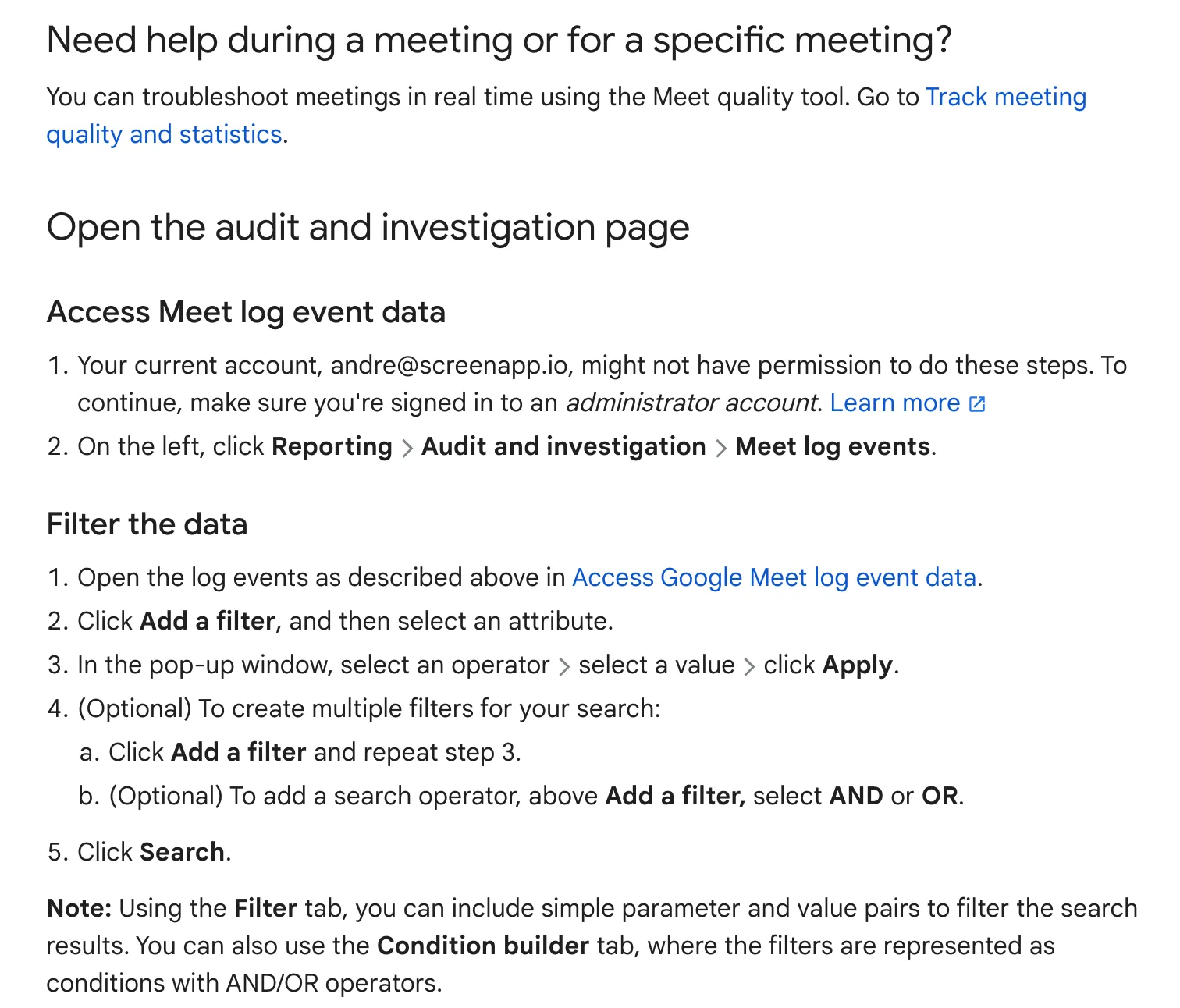
3. Using a Google Meet History Management tool
Managing Google Meet history can be a tedious and time-consuming task, especially when juggling multiple meetings and projects. ScreenApp, a free solution to record all of your meetings, simplifies this process, enabling you to effortlessly access, organize, and utilize your Google Meet history.
1. Automatic Recording and Transcription
ScreenApp automatically records and transcribes your Google Meet meetings, saving you the hassle of manual transcription or relying on external tools. This feature ensures that every word spoken during your meetings is captured and stored for future reference.
2. Organized History Dashboard
ScreenApp organizes your Google Meet history into a user-friendly dashboard, making it easy to find and review past meetings. You can also filter your history by date, attendees, or meeting titles to quickly locate specific meetings.
3. Powerful Search Functionality
ScreenApp's powerful search functionality allows you to quickly find relevant information within your Google Meet history. You can search by keywords, phrases, or even specific speakers to pinpoint the exact moment you need.
4. Enhanced Productivity and Accountability
ScreenApp transforms the way you manage your Google Meet history, empowering you to:
- Generate meeting summaries and action items
- Share meeting recordings and transcripts with team members
- Track meeting attendance and participation
- Identify key discussion points and decisions
- Improve overall team collaboration and knowledge sharing
With ScreenApp, you can say goodbye to the days of manually transcribing meetings or struggling to find past discussions. ScreenApp streamlines the process of managing Google Meet history, making it accessible and actionable for everyone. Whether you're a project manager, team leader, or individual user, ScreenApp is an invaluable tool for enhancing your productivity, accountability, and team collaboration.
How to access and Manage Google Meet History
In this section, you'll learn how to easily install, set up, and utilize ScreenApp to effectively manage your Google Meet history.
1. Signup Up for ScreenApp
Create a free account: You can sign up using your email address or connect with your Google account.
2. Open up your Google Meet session.
Start your Google Meet meeting as usual.

3. Recording a Google Meet Session
- Start a new recording: Click on the "Record" button located in the ScreenApp toolbar.
- Select the recording area: Choose whether to record the entire screen or a specific application window. For Google Meet, select the "Full Screen" option.
- Choose recording settings: Adjust the recording settings, such as video quality, frame rate, and audio input.
- Start recording Google Meet: Open the Google Meet session you want to record. ScreenApp will automatically capture the video and audio of your meeting.
- End the recording: Click on the "Stop" button in the ScreenApp control panel when you're finished recording.
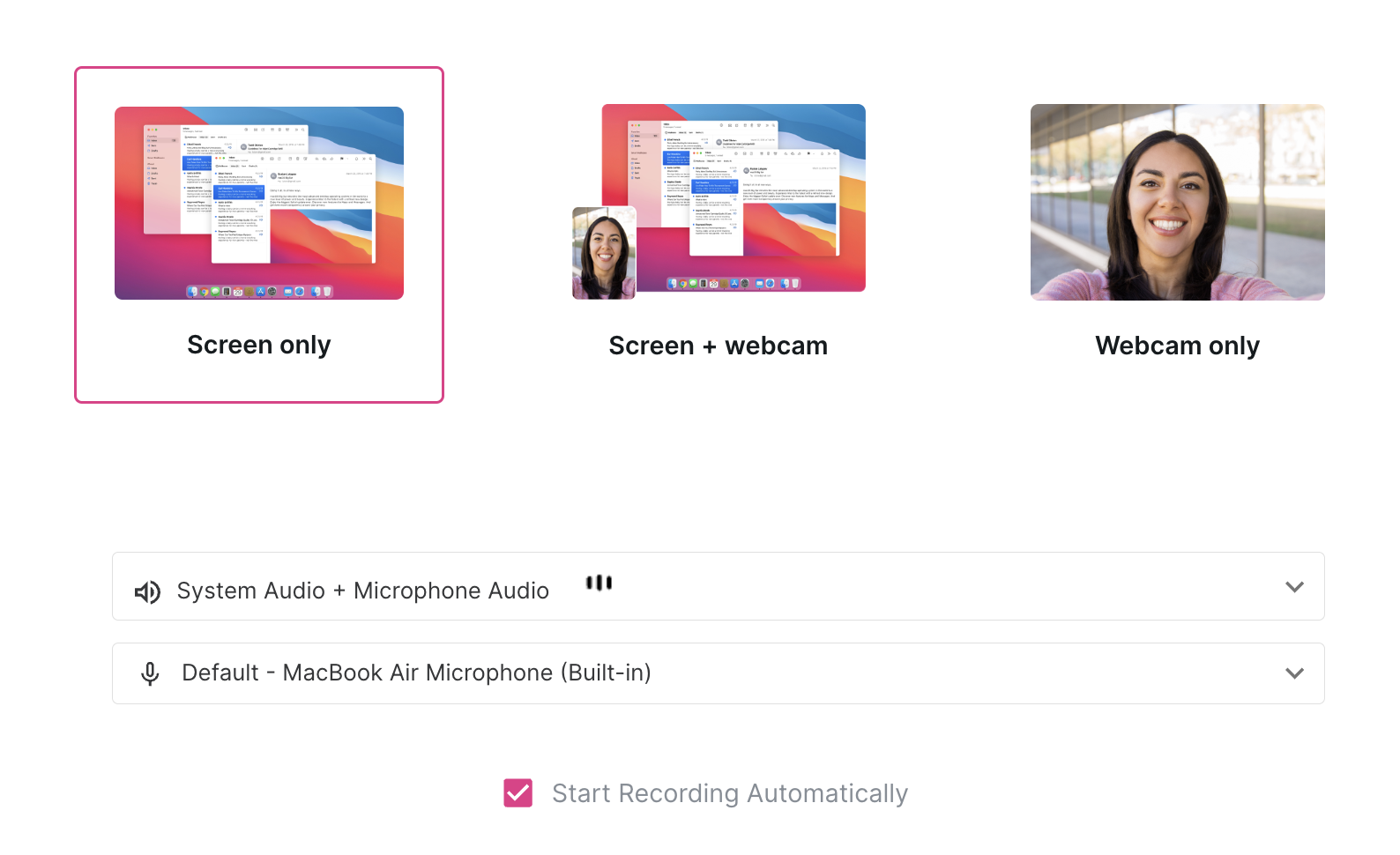
4. Saving and Transcribing Google Meet Recordings
- Access recorded meetings: Once the recording is complete, you can access it within the ScreenApp platform.
- Save recordings to cloud storage: ScreenApp allows you to save your recordings to cloud storage services like Google Drive, Dropbox, or OneDrive.
- Transcribe recorded meetings: ScreenApp provides automatic transcription of your recorded meetings. You can view the transcripts alongside the video recordings.
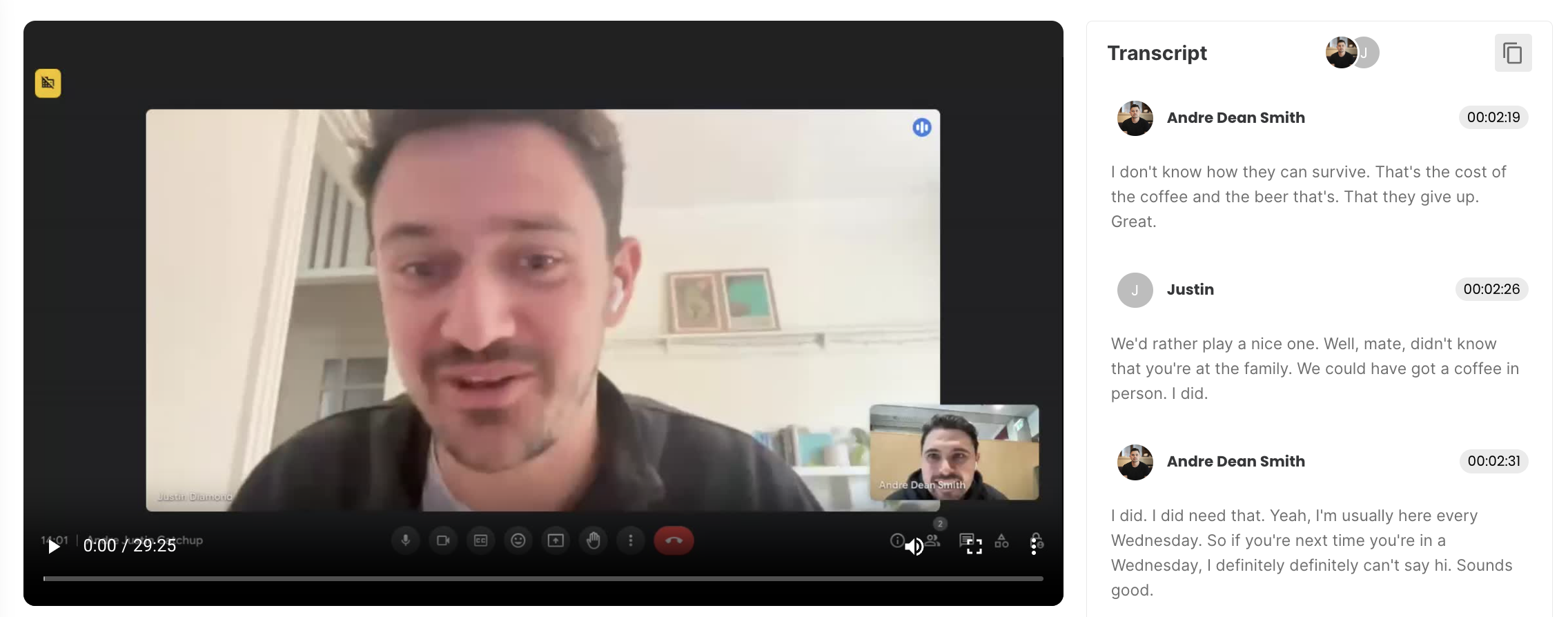
5. Searching Google Meet History
- Access search bar: Open the ScreenApp platform and navigate to the "History" section.
- Enter search terms: Use the search bar to enter keywords related to your Google Meet meetings.
- Filter search results: Filter the search results by date, meeting participants, or keywords from the transcribed text.
- Playback recorded meetings: Click on a search result to playback the corresponding recorded meeting.
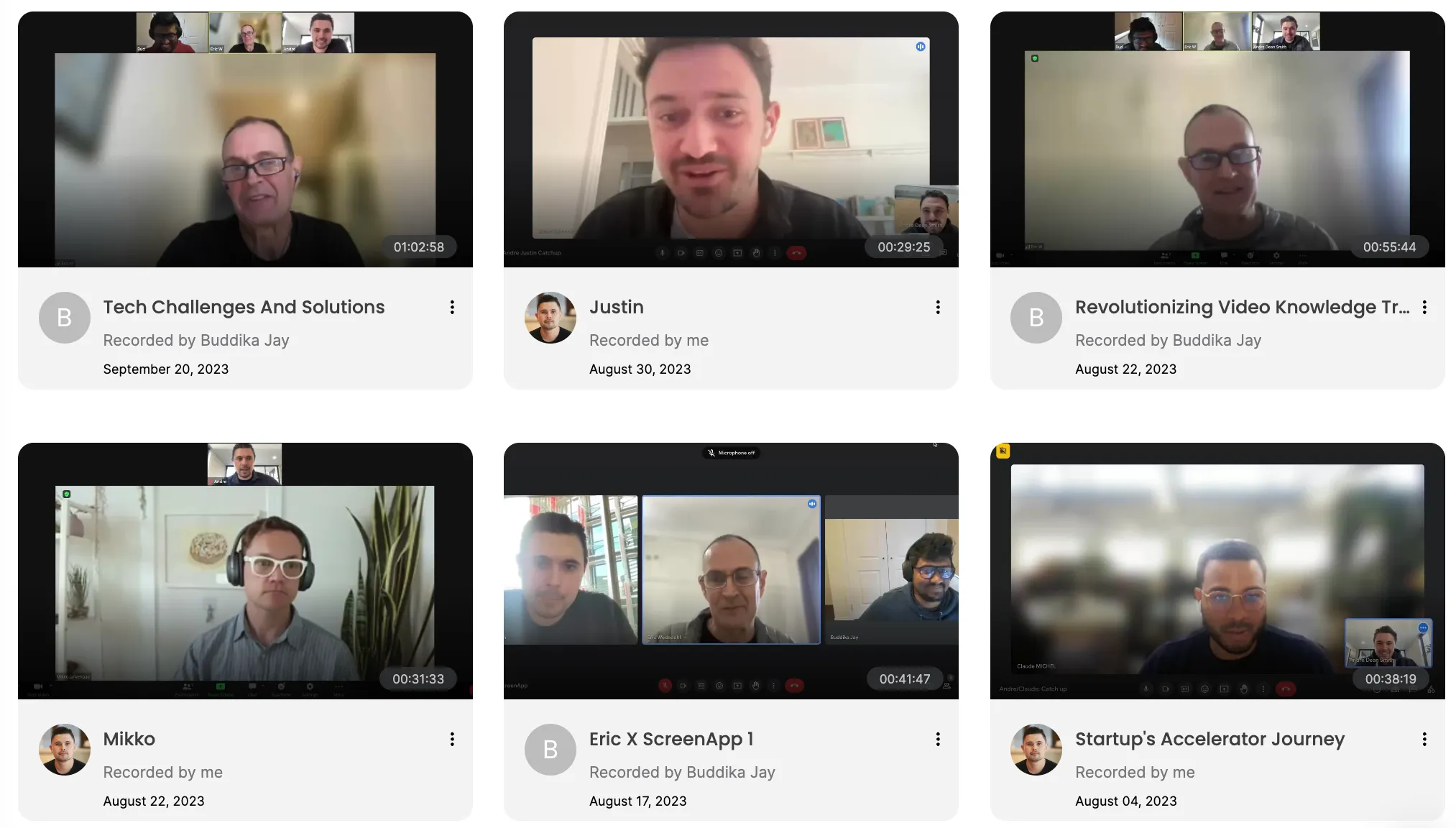
How to Search through your Google Meet History in ScreenApp
ScreenApp's powerful search feature lets you easily find specific moments and information within your recorded Google Meet transcripts. Here's how:
- Go to your dashboard: Navigate to your main ScreenApp dashboard.
- Locate the search bar: Find the dedicated search bar on your dashboard. It's usually prominently placed.
- Type in your query: Enter relevant keywords, phrases, or even the names of meeting participants.
- Review Results: ScreenApp will search through your transcripts and present matching recordings. You can click on a result to play back that specific section of your Google Meet meeting.
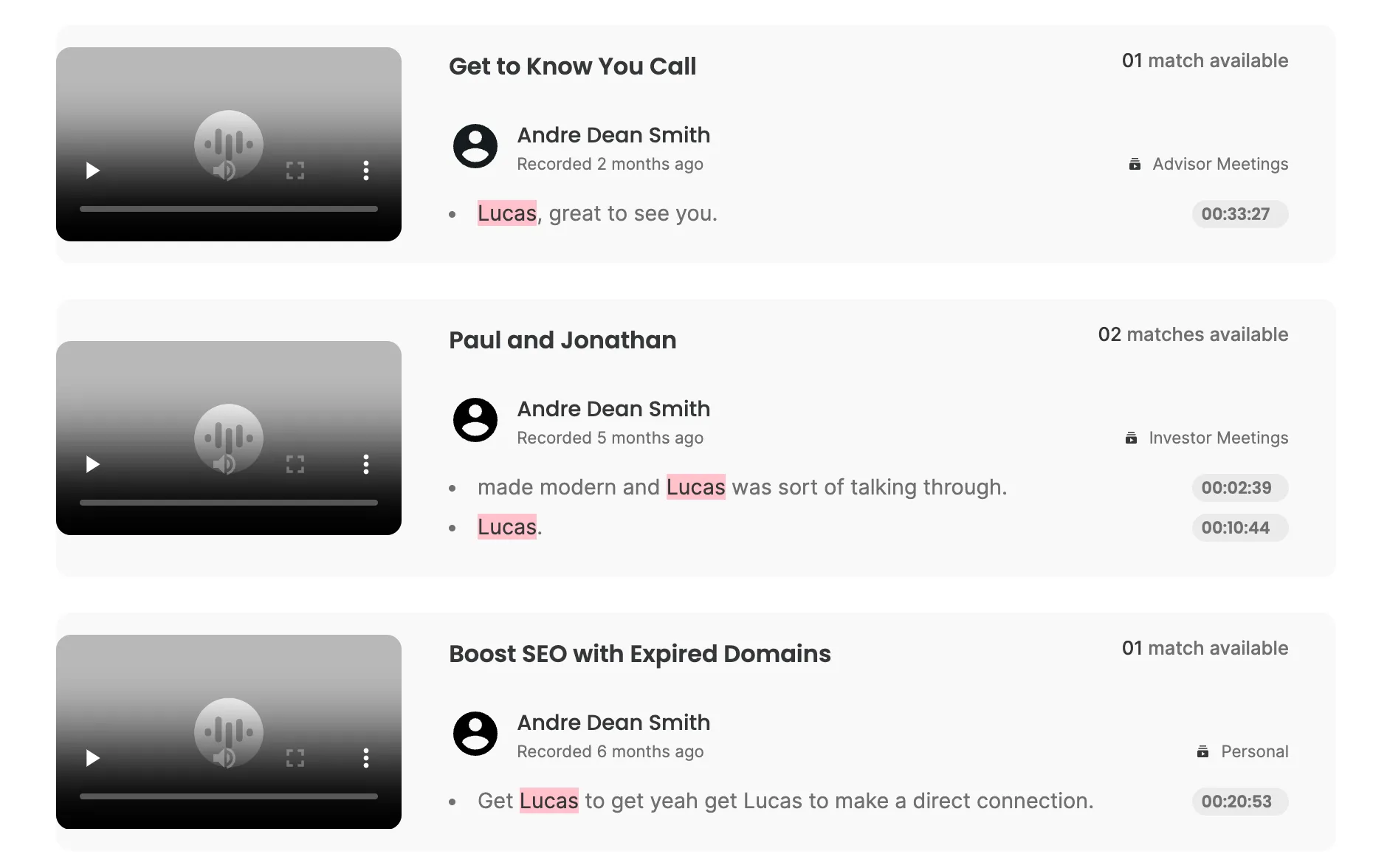
Benefits of Using ScreenApp's Google Meet History Tool
- Automatic Recording & Transcription: No more manual note-taking or spotty audio
- Organized Dashboard: Easily find the right meeting by date, title, or participants.
- Powerful Search: Find specific moments by keywords, phrases, or speaker names.
- Clear Summaries: Get key points and action items without re-watching the whole meeting.
- Easy Sharing: Collaborate with teammates by sharing recordings and transcripts.
- Track Attendance & Participation: See who's engaged and optimize meeting effectiveness.
- Boosts Productivity: Save time on meeting follow-up so you can focus on the work itself.
- Seamless Google Meet Integration: Recordings and transcripts are captured automatically.
- Free & Accessible: Available as a Chrome extension for anyone using Google Meet.
How it Improves Your Workflow:
ScreenApp takes the hassle out of Google Meet follow-up. Instead of struggling to remember or manually process meeting content, you can easily search, review, and share the most important information.


.webp)
.webp)
